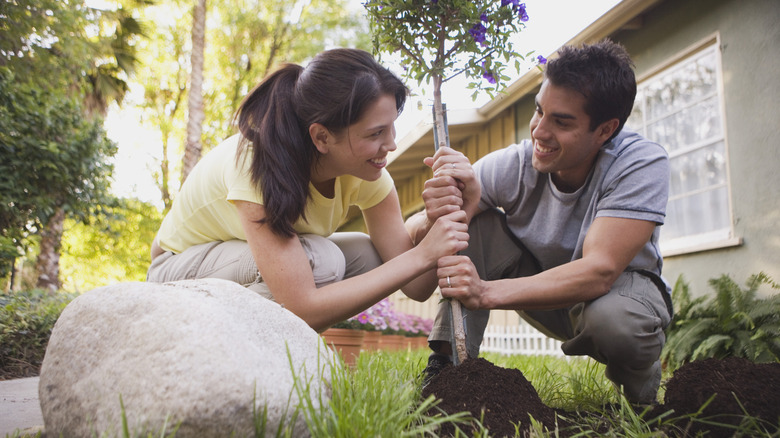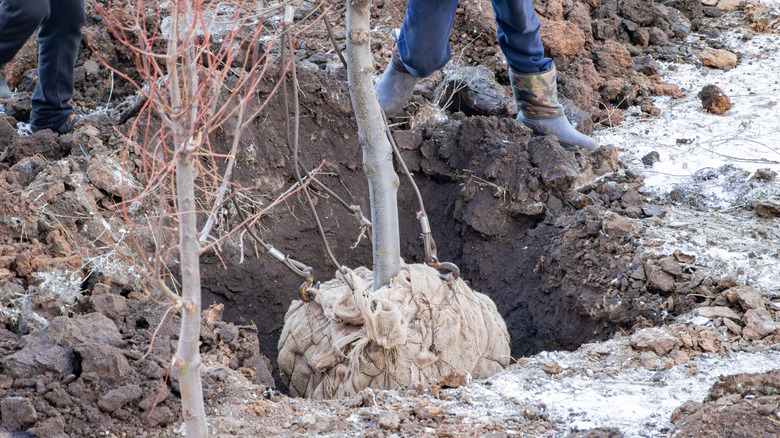Everything You Need To Know About Transplanting The Tree In Your Yard
"Right plant, right place" is the mantra of contemporary gardeners, but what happens when you make a mistake and situate a plant, especially one as cumbersome as a tree, in the wrong place? Perhaps you didn't know what to consider about choosing the right tree for your front yard. Sometimes trees start out in the right place, but later circumstances make it the wrong place, like the 400-year-old Texas tree that eventually stood in the way of a road-widening project. Unlike the city of Kyle, which is paying almost $1 million to move the tree, you are probably not willing to spend that much to move your wrong-place tree. Maybe you just made a mistake, and for example, the tree you just planted isn't far enough away from your home. Is it possible to transplant elsewhere? If it is a tree small enough that you planted it on your own, it's probably not too unwieldy to transplant.
The rule of thumb is that only trees with a diameter of 2 inches or less should be moved and transplanted without professional assistance. Timing matters with transplanting; transplant deciduous trees in early spring before leaves emerge or after leaves drop off in the fall. Transplant evergreens in early spring or late fall. You'll first want to identify and prepare your tree's new location, one that matches the growing needs of your tree. Consider exposure to the elements, sunlight, drainage, and pH level of the soil.
Protect the roots of the tree you're transplanting
Moisten the soil around the tree to be transplanted to make digging easier; start the watering process a few days before transplanting if the soil is very dry. Ideally, you will strive to keep soil around the roots in a rootball with a diameter of 8 to 12 inches for every inch of tree diameter. Start the digging process with a trench around the tree at a depth of up to 2 feet, using a spade. Dig under the root ball and cut roots from the bottom as necessary. Place tarp in the hole and tilt the rootball onto it. Then lift the tree from the bottom, not the trunk, onto the tarp and out of the hole. Wrap the rootball in burlap and secure. You can use the tarp to drag the tree to its new location. Prevent the roots from breaking during the process, as damage could critically harm the tree.
Ideally, you'll transplant to the new location right away, but if you can't, be sure to keep the tree's roots moist. The new hole for the tree you're transplanting should be two to three times the rootball's width with a depth 2 to 3 inches less than its height. Lift the tree into its new hole with care. After positioning it, start refilling the hole and pat down soil around the rootball. Remove the twine when the hole is about halfway filled with soil. You can leave the burlap, as long as it's not a synthetic material. Finish filling the hole and give the transplanted tree a thorough watering. To further support the tree after transplant, you may want to implement a practice often used for transplants — stabilizing your larger trees with a genius gardening technique — called guying.

